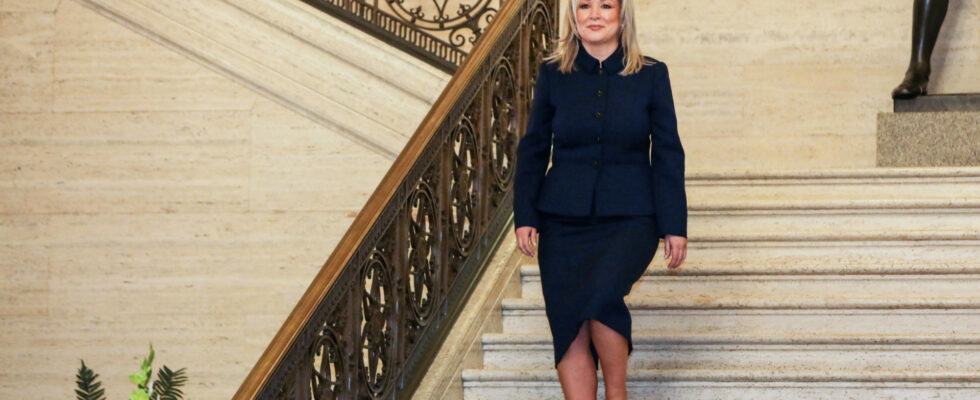Michelle O’Neill officially became the first Republican, in favor of the unification of Ireland, on Saturday to take the helm of the Northern Irish government, a historic shift in the British province with a past marked by three decades of bloody conflict. The 47-year-old leader of Northern Ireland’s Sinn Fein was appointed Prime Minister after the restart of the province’s institutions, boycotted for two years by unionists to oppose the post-Brexit trade arrangements they denounced as a threat to the place of Northern Ireland within the United Kingdom.
This is an historic day.
It is about the future.
It is about working together to deliver for workers and families, and creating new and exciting opportunities that ensure our children and grandchildren can achieve their dreams and ambitions in life.
As a Prime Minister for…
— Michelle O’Neill (@moneillsf) February 3, 2024
A new era”
In front of elected officials gathered at Stormont Palace, she hailed “a historic day”, a “new era” and promised an assembly “for all”, stressing that it would have been “unimaginable for the generation of (her) parents” that A nationalist heads the local executive. The province’s institutions had been blocked for two years due to a boycott by DUP unionists to oppose post-Brexit trade arrangements which they denounced as a threat to Northern Ireland’s place within the United Kingdom. .
Upon her arrival at Stormont, Sinn Fein leader for the whole island of Ireland, Mary Lou McDonald, said the Northern Irish government “could not be in better hands”. “It is a victory for everyone today, the demonstration that equality and inclusion are on the agenda,” she added. Under the co-governance resulting from the Good Friday Agreement of 1998, which ended three decades of bloody conflict, Michelle O’Neill will have at her side a Unionist Deputy Prime Minister, Emma Little-Pengelly.
An unprecedented shift
Sinn Fein came out on top in the May 2022 elections, an unprecedented shift for this formation, once the political showcase of the IRA (Irish Republican Army), but the political impasse prevented Michelle O’Neill from taking office. Local government, responsible for areas such as housing, health, employment, agriculture and the environment, must be formed. Current affairs had been managed by the administration and London for two years due to the blockage which caused exasperation among the population.
After months of negotiations with the British government, unionists from the Democratic Unionist Party (DUP) announced their decision this week to end their boycott. This led to the paralysis of the Assembly and the local executive, where power is shared between the unionists – committed to maintaining Northern Ireland in the British fold – and the republicans.
Border puzzle
Highlighting the difficult road ahead, DUP leader Jeffrey Donaldson argued his party had “brought about the change that many described as impossible”. He hailed a “good day for Northern Ireland”, where “our place within the United Kingdom and its internal market is respected and protected”. An argument far from convincing the hardest unionists, like Jim Allister (TUV, Traditional Unionist Voice), for whom Northern Ireland remains “directed largely by foreign laws”, those of the EU. .
In the implementation of Brexit, one of the main difficulties was to find a solution which avoids the return of a physical border between the Republic of Ireland, member of the EU, and the British province, while protecting the integrity of the single European market. A modification of these provisions negotiated between London and Brussels a year ago, called the “Windsor framework” and reducing controls on goods, was not enough to convince the DUP.
But the Unionist Party led by Jeffrey Donaldson ended up accepting an agreement with the British government this week, believing that this text offers sufficient guarantees and that it removes the border in the Irish Sea that it denounced. A decision which, however, is not unanimous even within his party. The restart of Northern Irish institutions will also allow the release by London of an envelope of 3.3 billion pounds sterling (around 3.9 billion euros) to support public services, which recently experienced a strike. historic magnitude.
